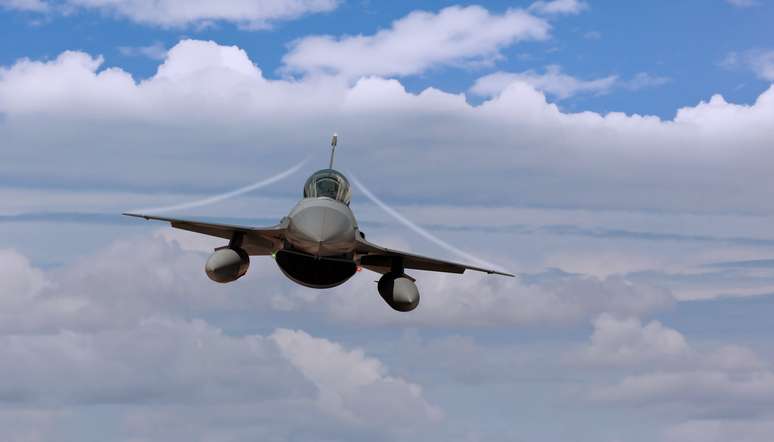Business Lists and Databases Available for Marketing and Research - Direct Mailing Emailing Calling
NAICS Code 336415 - Guided Missile and Space Vehicle Propulsion Unit and Propulsion Unit Parts Manufacturing
Government Level - NAICS 6-Digit - Updated to 2022 NAICSBusiness Lists and Databases Available for Marketing and Research
Business List Pricing Tiers
| Quantity of Records | Price Per Record | Estimated Total (Max in Tier) |
|---|---|---|
| 0 - 1,000 | $0.25 | Up to $250 |
| 1,001 - 2,500 | $0.20 | Up to $500 |
| 2,501 - 10,000 | $0.15 | Up to $1,500 |
| 10,001 - 25,000 | $0.12 | Up to $3,000 |
| 25,001 - 50,000 | $0.09 | Up to $4,500 |
| 50,000+ | Contact Us for a Custom Quote | |
What's Included in Every Standard Data Package
- Company Name
- Contact Name (where available)
- Job Title (where available)
- Full Business & Mailing Address
- Business Phone Number
- Industry Codes (Primary and Secondary SIC & NAICS Codes)
- Sales Volume
- Employee Count
- Website (where available)
- Years in Business
- Location Type (HQ, Branch, Subsidiary)
- Modeled Credit Rating
- Public / Private Status
- Latitude / Longitude
- ...and more (Inquire)
Boost Your Data with Verified Email Leads
Enhance your list or opt for a complete 100% verified email list – all for just $0.10 per email!
NAICS Code 336415 Description
This U.S. industry comprises establishments primarily engaged in (1) manufacturing guided missile and/or space vehicle propulsion units and propulsion unit parts and/or (2) developing and making prototypes of guided missile and space vehicle propulsion units and propulsion unit parts. Source: Census.gov - NAICS 2022 compliant
NAICS Code 336415 - Guided Missile and Space Vehicle Propulsion Unit and Propulsion Unit Parts Manufacturing is a final level code of the “Manufacturing” Sector. There are 4 companies verified as active in this industry in the USA with an estimated employment of 20,877 people.
Industry Sector
ManufacturingAnnual Payroll
$1,878,978,000Total Revenue
$8,000,827,000SBA Size Standard
Maximum 1,250 EmployeesParent Category - 5-digit Level (less specific)
Marketing: NAICS Codes (8-digit) for Guided Missile and Space Vehicle Propulsion Unit and Propulsion Unit Parts Manufacturing
Access In-depth Industry Analysis: Reach out to companies and executives within these industries.
Industry Examples of NAICS 336415
Common types of examples within NAICS Code 336415 - Guided Missile and Space Vehicle Propulsion Unit and Propulsion Unit Parts Manufacturing are:
- Developing and producing prototypes for guided missile and space vehicle engines
- Guided missile and space vehicle engine manufacturing
- Propulsion units and parts, guided missile and space vehicle, manufacturing
- Rocket engines, guided missile, manufacturing
Industry Image
Example photo for industry NAICS 336415 - Guided Missile and Space Vehicle Propulsion Unit and Propulsion Unit Parts Manufacturing . This image represents an activity or product found in this industry.

Cross-References
Companies
SICCODE.com compiles comprehensive business data and executive contact leads for businesses within NAICS Code 336415 - Guided Missile and Space Vehicle Propulsion Unit and Propulsion Unit Parts Manufacturing . Some of the leading and most notable companies are listed below. To order a list of companies within NAICS Code 336415 - Guided Missile and Space Vehicle Propulsion Unit and Propulsion Unit Parts Manufacturing for marketing (postal mailing, telemarketing, emailing) or analytics-use, click on the link below to “Buy Business List”. Our data analysts are standing by to assist in your list setup and target marketing.
Industry Executives
Would you like to email executives in NAICS Code 336415 - Guided Missile and Space Vehicle Propulsion Unit and Propulsion Unit Parts Manufacturing ? Below are some of the common job titles available to be targeted.
- Business Development
- Chairman
- C-Level
- Director
- Engineering
- Executive Director
- Facilities
- Finance
- Human Resource
- IT
- Manager
- Marketing
- Manufacturing
- Operations
- Owner
- Partner
- President
- Principal
- Purchasing
- Sales
- Vice President
For specific job title targeting, please provide details in the business list request form.
USA Import, Export, and Balance of Trade
Import (USD)
$624,920,060Export (USD)
$791,715,416Balance of Trade (USD)
$166,795,356Top Countries by U.S. Imports
| Russia | $225,816,047 |
| United Kingdom | $127,833,713 |
| Japan | $81,892,306 |
| Germany | $41,365,176 |
| Norway | $40,486,591 |
Top Countries by U.S. Exports
| Japan | $164,928,015 |
| United Arab Emirates | $93,688,222 |
| Australia | $91,759,734 |
| Israel | $82,586,839 |
| Korea, South | $59,878,540 |
Countries With Highest Trade Surplus
| United Arab Emirates | $93,688,222 |
| Japan | $83,035,709 |
| Australia | $79,702,372 |
| Korea, South | $59,878,540 |
| Israel | $56,673,496 |
Countries With Highest Trade Deficit
| Russia | -$225,803,432 |
| United Kingdom | -$108,015,098 |
| Norway | -$34,568,469 |
| Canada | -$20,125,002 |
| Netherlands | -$10,281,029 |
U.S. Total Import value for NAICS Code 336415 is $624,920,060. Russia, United Kingdom, and Japan accounted for the top imports of Missile/Space Veh Propulsion Units & Parts in 2018.
U.S. Total Export value for this industry is $791,715,416. Japan, United Arab Emirates, and Australia accounted for the top exports of Missile/Space Veh Propulsion Units & Parts in 2018.
Questions & Answers
-
What is the SBA size standard for NAICS 336415?
Businesses up to 1,250 Employees in size are considered small businesses by SBA.
-
How many active businesses operate in NAICS Code 336415?
There are 4 verified business locations operating primarily in this industry.
-
What was the total revenue for NAICS Code 336415?
In 2017 the total revenue for Guided Missile and Space Vehicle Propulsion Unit and Propulsion Unit Parts Manufacturing was $8,000,827,000
-
What was the annual payroll for NAICS Code 336415?
In 2017 the annual payroll for Guided Missile and Space Vehicle Propulsion Unit and Propulsion Unit Parts Manufacturing was $1,878,978,000
-
How many people work in NAICS Code 336415?
The number of reported paid employees is 20,877.